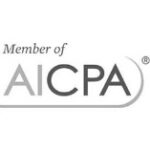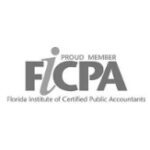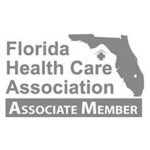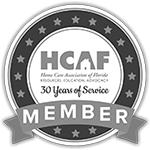Cash flow in healthcare impacts the quality of patient care and the financial health of medical organizations. We’d like to share this article, which covers challenges such as patient deductibles and insurance reimbursements and provides some practical strategies for improving cash flow.
Cash Flow: A 1,000-foot View
First, there are three primary types of cash flow that companies should monitor: cash flow from operating activities, cash flow from investing activities, and cash flow from financing activities. These categories are essential for understanding a business’s liquidity and solvency status and are detailed in a business’s cash flow statement.
For the purpose of this blog, we’d like to focus on operating activity cash flow, which in the healthcare sector typically refers to the oversight of when cash payments for services provided are collected. This oversight also aims to balance between what monies are owed to and by the organization. This balance is crucial to effective cash flow management so that obligations do not outweigh available resources.
Currently, healthcare providers are navigating significant cash flow challenges exacerbated by rising patient out-of-pocket expenses, tighter insurance reimbursements, and growing operational costs. Inflation is hitting many industries and healthcare is no different. That said, there are ways to address these challenges, such as how to best leverage technology like real-time data integration and automation. These will help improve cash flow management and offer professionals better decision-making abilities. Also, refining the revenue cycle through improved billing processes, robust insurance verification, and regular financial reviews are also ways for businesses to maintain their financial stability and to ensure timely cash inflows.
Common Cash Flow Challenges in Healthcare
Let’s start with some of the problems facing healthcare organizations today. First, the surge in patient out-of-pocket costs due to increased deductibles can result in delays or even failures to make payments for medical services; this exacerbates the strain on healthcare facility cash flows.
There is also an ongoing trend with insurance companies enforcing stricter reimbursement guidelines. This is leading to reduced compensation for healthcare providers. Why does this matter? First, variability in insurance payouts creates obstacles as it hampers healthcare entities from accurately projecting their income streams. Compound this with the fact that many providers often fail to pay attention to their collection rates. What this can lead to is a failure to detect liquidity issues early on.
As mentioned above, the gradual and persistent increase in overhead expenses (inflation) contributes significantly to the cash flow challenges faced by healthcare facilities. Take the rising costs for state-of-the-art technologies and medical supplies that facilities need. These add to the pressure on the fiscal soundness of healthcare institutions. Caught up in this intricate web of cost drivers are the providers who find themselves constantly struggling under the burden managing their funds efficiently.
Understanding these obstacles give healthcare providers perspectives that can help them incorporate better strategies at fortifying cash management practices—not only so that they shore up their financial stability, but also so they have sufficient resources to deliver high-quality patient care.
Technology as a Tool for Improved Cash Flow Management
Using appropriate technology is key to ensuring effective cash flow management in healthcare. Adopting “real-time data” systems, first of all, can equip professionals in the healthcare field to “actively” oversee their cash flows.
One noteworthy technological advance is the implementation of what are called API-centric treasury management systems. First of all, APIs are application programming interfaces, which connect systems so they can communicate and exchange data with each other. So, in a healthcare provider context, when users enter a patient’s information, that data can then connect with insurance company systems that then provide information on the coverage the patient has for a specific medication or procedure. This process is possible due to APIs with their uses growing in frequency and complexity.
As a bit of a backstory to these advances, approximately a decade ago, Congress passed the 21st Century Cures Act which, amongst many things, encouraged standardization and the better and more secure access and exchange of patient healthcare data. This effort has pushed forward the use of technology which indeed saves time and increases data precision. This in turn, has helped healthcare organizations incorporate better cash management processes.
The automated consolidation of financial records has also helped blunt more traditional hand-entered procedures. With accuracy increased, and time and resources saved, organizations will have more real-time snapshots of their institution’s cash flow (or liquidity) status. And as readers of Walters’ blogs know, by using technology tools, employees are always better prepared to handle the inevitable audits that will come as they can help uncover billing issues or even deceitful practices that may be occurring in their organizations.

Revenue Cycle Management (RCM)
So why is cash flow important? Something we’ve discussed in previous articles, and an important element of why cash flow considerations are important, is the connection to Revenue Cycle Management, or RCM. Medical practices often have outdated agreements with their payers. This leads to them not realizing the potential for higher reimbursements. That said, the adoption of automated systems for accounts payable can help expedite invoice processing, cut costs, and improve cash flow. Additionally, by making sure employees use metrics such as Days Payable Outstanding (or DPO), businesses can adjust their dealings with their suppliers, and again, improve their cash management procedures. When a healthcare entity takes advantage of each—and every—opportunity for early vendors payment discounts, they may see notable cost reductions. It can also be a strategy to strengthen the relationships they have with their vendors, as it indicates a willingness to commit early to purchasing.
Streamlining RCM fosters prompt inflow of funds (back to the point of cash flow management’s connection to RCM) and can reduce the billing cycle duration. Routine comparisons between projected financial outcomes and actual expenditures will also help to avert erroneous payments.
Automating Billing Processes
Another strategy that works (and something we’ve reported on before) is the use of automated systems for billing procedures. Healthcare providers that use automated billing will achieve faster reimbursement rates, which will lead to better employee workflows and increase patient satisfaction. Taking this one step further is the use of Robotic Process Automation (RPA or what are colloquially knows as “bots”) that can improve billing functions. While these systems may seem to be in early innings, they are coming and will only come faster with the integration of AI. Such robot assistants can increase accuracy and cut down on monotonous, and at times, mind-numbing activities. To finish the point, these help with swifter claim filing, faster payment receipts, and bolstered cash flow and operational effectiveness.
Other Strategies for Managing Cash Flow
Let’s start with the obvious. Healthcare organizations must conduct regular evaluations of their financial assets so they can pinpoint potential problems areas with cash flow before these issues escalate. This gives service providers a heads up to implement any interventions quickly. Also, establishing a reserve fund is important for healthcare entities as a way to address any unforeseen fiscal demands without impacting other operational initiatives or, importantly, disrupting patient care. In a nutshell, by using reviews, automation, and reserve funds, healthcare business will reduce mistakes, cut down on administrative expenses, and increase cash flow.
Concluding Thoughts: Ensuring Financial Health in Healthcare
Efficient management of cash flow is another arrow in the quiver for healthcare businesses to improve their operational and financial effectiveness. By realizing that cash flow management challenges can be softened with various techniques, particularly technological ones, healthcare providers will strengthen their financial foundations. Furthermore, by engaging financial specialists, including external consulting and accounting firms with relevant expertise, healthcare companies can get important assistance when needed. By using the strategies discussed here, and implementing said suggested tactical maneuvers, providers can ensure ever-important cash flow management and long-term financial sustainability.












